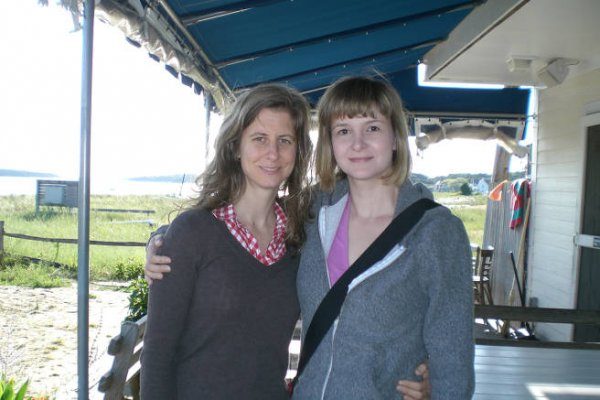As a gay woman, I felt transgenderism was homophobic and sexist. It took a while to understand that it’s neither.
It’s a sleepy Saturday afternoon in Downey, California, a dull suburb of Los Angeles, where I grew up. I’m 10. The sun rains a shower of light through the window in my parents’ bathroom. I’m sitting on the cold toilet seat after a hot bath, examining, in horror, the burgeoning mound of flesh on my chest. My mom is golfing at the Rio Hondo Golf Course, and my dad, a computer engineer, is invariably hunkered over his workstation. My brother, 13, is probably biking around Cord Street, on which our house sits. I’m certain that all the potential witnesses to the devious act I’m contemplating are out of sight so I proceed to the medicine cabinet and pull out my dad’s Barbasol shaving cream.
After slathering it like frosting all over my face, I take the bristly end of my toothbrush in the palm of my hand and start “fake-shaving,” mimicking my dad’s brusque hand strokes. It’s exhilarating and satisfies me on a level too deep for words, but halfway through, my brother appears out of nowhere. “What are you doing?” he asks. He looks shocked—like he’s just seen a monkey-manned vehicle drive by. “Just messing around,” I say, trying my best to make it seem like innocent fun. A smirk of contempt spreads across his face and he snort-laughs. “Dude, you’re weird,” he says before sauntering off. I pray he doesn’t tell our parents. I can’t quite lift the feeling of his disdain off of me. It lingers as I wash off my face, retreat to my bedroom, and realize that I’m only a boy in my mind.
***
Over the past few years, transgender issues have garnered bursts of positive attention in the media: In 2011, Chaz Bono, Cher’s trans son, boogied his heart out in front of a cheering crowd on Dancing With the Stars; In early 2012, Glee portrayed its first transgender character; a year later, Netflix premiered its original series Orange is the New Black, featuring trans actress Laverne Cox. This year we saw Caitlyn Jenner’s very public transition. But nothing rivals Facebook’s radical comment on the limitations of our binary gender system: In February 2014, the social network added more than 50 gender options for how users can self-identify.
Related: Trans Translated: ‘Boys Don’t Cry’ Director Kimberly Peirce On 20 Years of Queer Culture
And yet, despite these inklings of progress, the discourse around transgenderism remains far more complicated than these milestones suggest.
Nothing seems to challenge people—destabilize them, really—as much as the idea that someone can reject his or her assigned sex and defy the limits of biology by transitioning from one to another. Take, for instance, Piers Morgan’s blundering interview with trans author Janet Mock or Katie Couric’s insensitive questions of trans actress Laverne Cox (about which Mock penned an impassioned essay for this very publication). By blurring the neat line between male and female, trans people force us to occupy the middle ground between two polarized extremes, and demand us to re-conceive our gendered assumptions.
The lively debates that ensued after Morgan and Couric’s missteps showed what a vital cultural force trans people are. The unsteadying questions they evoke—Is that a man or a woman? How can you tell? What makes one a man or a woman? Who gets to decide? And so on—help us think with broader complexity and imagination.
But I admit, it took me a while to “get it.”
